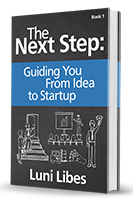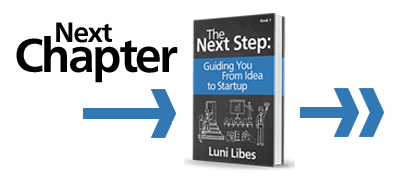100 @ $1/ea = 1 @ $100/ea
We need two definitions to help avoid misunderstandings in this chapter:
Price—The “price” of your product is the amount of money you ask your customers to pay you.
Cost—The “cost” is the amount of money it costs you to manufacture one copy of your product.
It is too soon to know the exact price (or prices) you will be able to charge for your product. However, this is the right time to choose whether you expect your product to be a high-price or low-price product.
For nearly all products and services, those are your only two viable options. The key understanding is that if you want to provide a large amount of customer support, then you have to charge a high price to afford that support. If you want instead to compete on price, aiming for a lower price than your competitors, then you will not be able to afford much, if any, customer support.
In nearly all cases, there is no viable middle way. If you aim for the middle, then you will not be able to match your high-price competitors’ level of service, and your product will cost far more than your low-price competitors’ products.
If you choose the high-price/high-service model, you will have fewer customers but a far higher average revenue per customer. If you follow the low-cost/low-service model, you will need to sell to far more customers and/or far more copies of your product to customers.
QUESTION 23:
High-price/high-service, small number of sales, or
Low-price/low-service, large number of sales?
This decision will affect the structure of your team, your marketing strategy, your sales processes, and will be a prominent factor in your financial plan. It is rare for companies to start at low-price and successfully change to be high-price, and trying to change strategies from high-price to low-price involves changing most everything within a company. Thus, now is the time to think through which is best for your company.
Bird Watch—[Pricing]: The goal is to make the tags as low-cost as possible so they can be low-price. (The tags can solve problems outside of wildlife measurement but are a viable solution for these additional markets only if they are inexpensive.) To start with, however, the tags will cost $10 each and the base stations $30 each, which means the prices will have to be somewhat high; for example, $25 per tag and $150 per base station.
Concrete Battery—[Pricing]: While the Concrete Battery technology is touted as “low-tech” and “low-cost,” this is only low relative to the competition. The goal is to produce the lowest-cost electricity storage solution, but nonetheless the initial installations will be priced at $200,000 per flywheel, with a target price of $100,000 per flywheel after the first year or two. Thus, in regards to the answer to the question above, the Concrete Battery is considered to be a sale that is high-cost/high-service and small in number.
Close to Home—[Pricing]: The product and purchase experience from Close to Home is expected to closely resemble the sale of any home, with a significant amount of discussion between the customer and a sales person. To afford this high level of customer service, Close to Home will be charging a 6-8% sales commission on the products listed within its marketplace, which are expected to have an average price of $30,000.
Ensibuuko—[Pricing]: The pricing of the Ensibuuko service needs to fit the affordability of Uganda and East Africa. These are countries with average annual incomes of $600-$800 per person. Additionally, the SACCOs are generally small cooperatives of rural farmers. They cannot afford expensive solutions. Today, SACCOs pay Ensibuuko a $1,000 annual fee. This might sound small to an American entrepreneur, but it is in fact a high price (larger than the average annual income in Uganda), with a corresponding high level of customer service provided for that price. In addition to the annual fee, Ensibuuko charges a 0.5% transaction fee for all deposits. This fee is low to encourage as much use as possible, to make the $1,000 per year fee easier to sell.
Pricing affects the market sizing. If each Bird Watch tag were sold for only a dollar, the product, unchanged, would likely find far more customers in a variety of other markets, growing the total addressable market for the company. Similarly, when launching the product, if the actual price per tag wound up at $250 per tag and $1,000 per base station, the total addressable market might shrink. At that price, the actual market may in fact shrink to zero.
Pricing can and should be based on the value to the customer, not on the cost of manufacturing. For Concrete Battery, the customers want to pay as little as possible, but the problem being solved costs those customers money today. Thus the solution only needs to be priced low enough to save the customers money as compared to other available solutions.
For Close to Home, the long-term sales commission is going to be determined more by the competition than anything else. If the market evolves like traditional, non-disaster real estate, the sellers will not try to undercut each other. If the market instead evolves like other e-commerce businesses, the website with the lowest price and lowest costs will be the winner.
For Ensibuuko, the big question is whether that $1,000-per-year fee will go up or down in the future. As more features are added to the core service, that price could rise. Some of those features may not apply to all 5,000 SACCOs, and thus the pricing model may get more complicated, with different prices for different sets of services. Or other competitive solutions may appear, forcing Ensibuuko to lower the $1,000-per-year price, perhaps as far as free, with all the revenues coming from the transaction fees. Pricing does often change over time due to growth and competition. For now, $1,000 per year is working fine.
QUESTION 24:
What is the selling price of my minimal viable product?
QUESTION 25:
What is your target price of my beyond-minimal product?
The above examples are just four tiny tastes of answers to the pricing questions. Many books have been written on pricing strategies. For now, a starting price and target price are sufficient.













